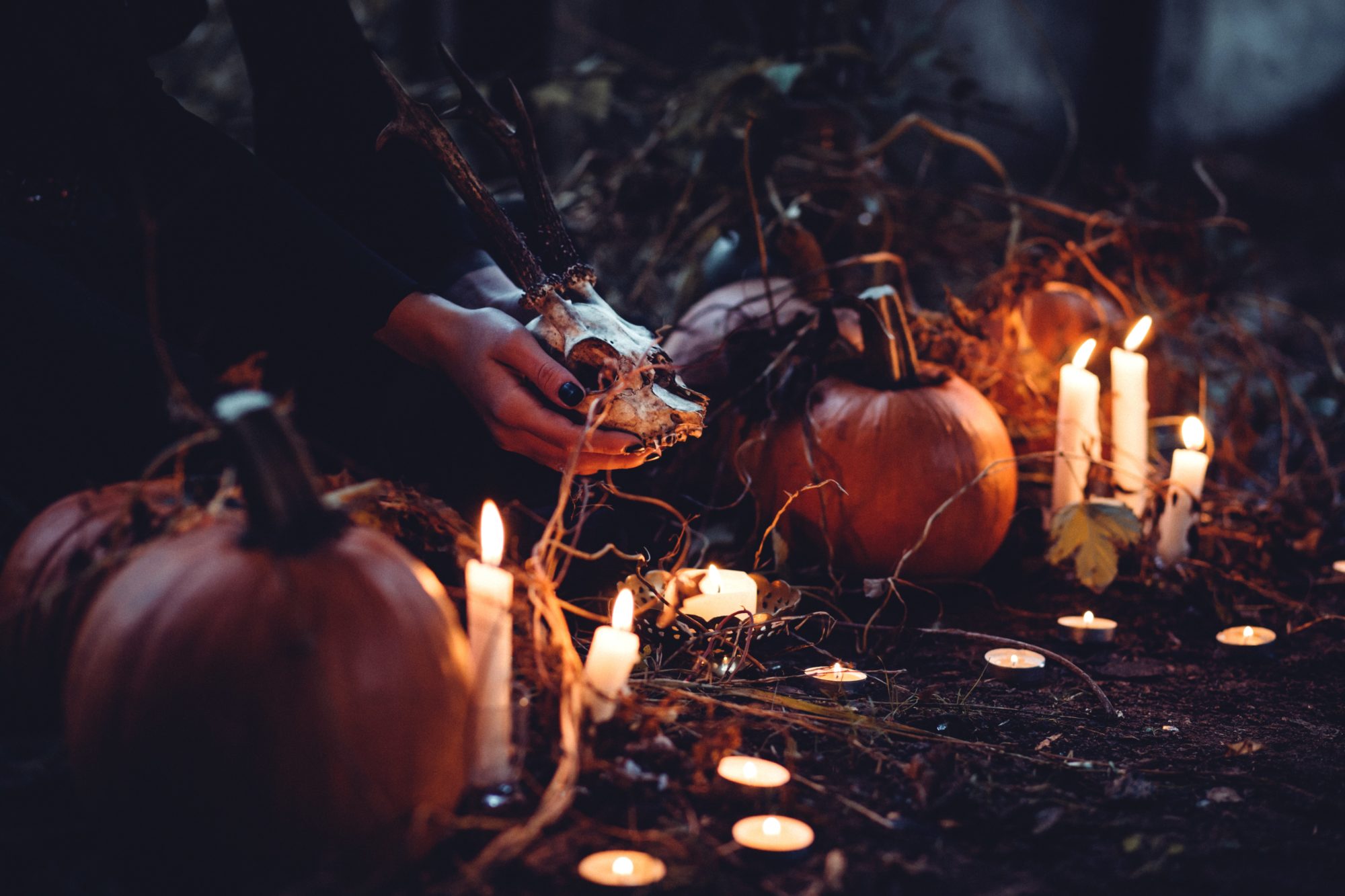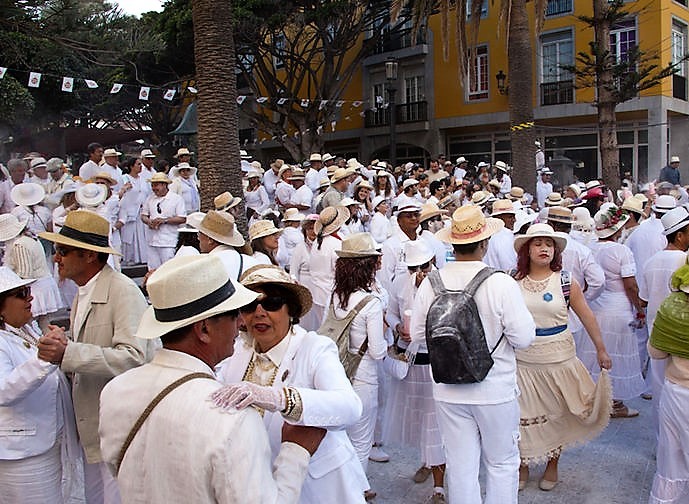We’ve all heard of the famous tradition of dressing up and knocking on doors trick or treating on 31st October. We’ve seen it on the television and it has taken over an increasing number of cities throughout the world. Although older people have adapted this date to their own tastes and don’t focus on collecting sweets, each year, it is increasingly common to find brands taking advantage of this date to launch discounts prior to Black Friday.
This celebration has Roman origins, in the ancient Feralia festival dedicated to the rest and peace of the deceased, and Celtic origins in the Samhain, the festival of the end of the harvest and start of winter. With the arrival of Catholicism and the Gregorian calendar, these festivals were moved to the 1st November, a date that has become “All Saints Day”, and Samhain became the eve of this day, “All Hallows Eve” or “Halloween”, as it is more commonly known.
Is Halloween a universal celebration? Is it celebrated everywhere in the same way?
Yes, Halloween has almost become a universal celebration and, no, Halloween is not celebrated in the same way everywhere. This is why we invite you to read this article , as it will enable you to discover a little more about the culture of these celebrations when it comes to making the most of this date for your sales strategies.
The link between the many types of celebrations is religious and spiritual. Awaiting the arrival of deceased family and friends and welcoming them with a big party. However, the way in which these rituals are celebrated is different.
Here we give you some of the more striking examples.
Samhain (Ireland)

Samhain, as its name suggests, means “the end of summer” and the ancient Celts celebrated the end of the harvest with this event. After the end of the harvest, the days get shorter and the nights become longer. The Celts believed that, during the night, the deceased returned to visit the world of the living, which is why they used to light large fires to scare away the evil spirits.
This was the celebration that welcomed in the new year.
Currently, some aspects of this celebration are preserved, such as the fire. The Irish continue to light fires as part of the celebration. They also continue to dress up in sombre and terrifying costumes. This is a direct reference to the ancient tradition when the druids dressed up to resemble spirits.
The tradition of the illuminated pumpkin that we know today started in Ireland, with turnips as lanterns. The origin of this tradition was the famous tale of Jack, the Irish farmer who wanted to trick the devil and managed to trap him in a tree full of crosses.
Additionally, during this celebration a game of snap apples is played in which you trap hanging apples, and for dinner, they serve the traditional dish of boiled potatoes, cabbage and onions known as ColCannon. Another traditional dish is Barm Brack, a sponge cake in which a coin and a ring are inserted. The guest who finds the money will prosper and the guest who finds the ring will get married soon.
Luz de las ánimas – Light of the souls, Trasmoz (Spain)
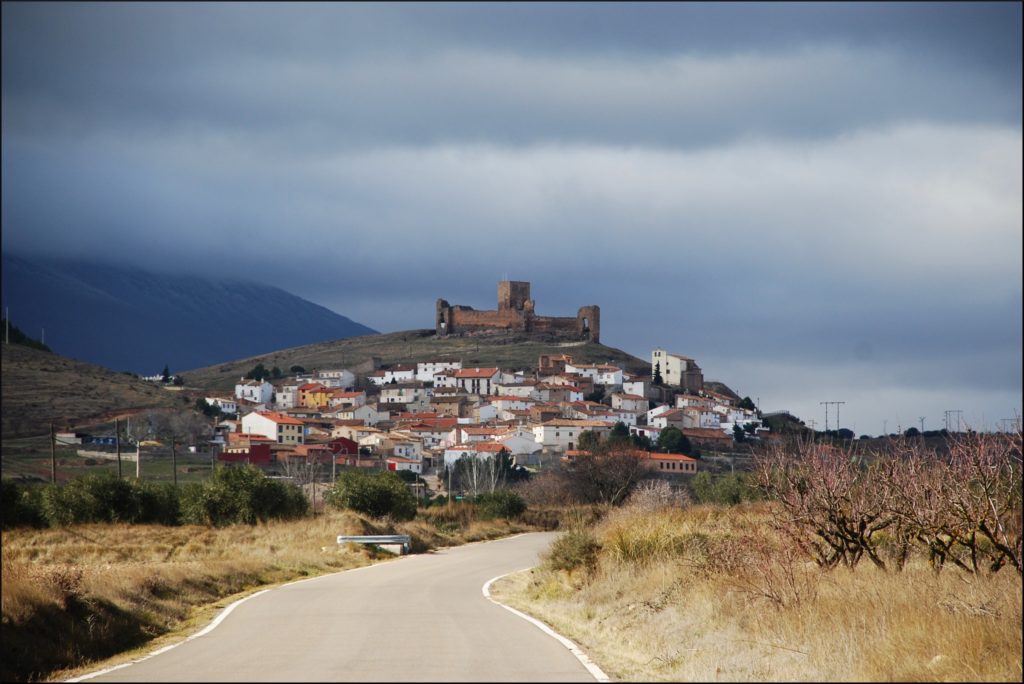
This tradition is celebrated on 2nd November and is a custom throughout the region of Aragon. However, one of the most famous villages is Trasmoz, a small village in the area of Zaragoza. Best known for being the only excommunicated and cursed village of Spain. According to the legends, in the 13th century, pagan activity was in full swing in this area and covens of witches would meet inside its castle walls.
The real story is somewhat more “boring”. In 1255, the inhabitants of this small village had a row with the abbot of the Monastery of Veruela over the amount of wood they were chopping down for the village and the monastery. The abbot, angered by the inhabitants’ attitude towards him and the monastery, excommunicated the entire village from Catholicism. An action that has still not been revoked today and that the inhabitants of Trasmoz have used as a touristic advantage.
The dark history of Trasmoz has positioned it as one of the most amazing villages in which to celebrate this festivity. The day starts with activities for everyone including carving and decorating pumpkins. The children are the protagonists of the daytime activities, including storytelling and face painting.
When night falls, the main event takes place, the Procession of the souls which goes from the village church to the cemetery. This is followed by the meal, dancing and tasting traditional sweets from the area.
Teng Chieh (China)

Although China celebrates Halloween in the western way (with fancy dress, parties and trick or treating), they also have their own tradition for this date.
During the celebration of Teng Chieh, the hungry ghost festival, it is said that the spirits from hell roam around the earth in search of food and entertainment. It is also believed that these ghosts are the ancestors of people who forgot to pay tribute to them when they died or those who did not have a funerary ritual.
During this festival, people celebrate the crossing over to the next life of loved ones who have passed away. Family members place food and drinks in front of their photographs, along with candles, and they light fires to light up the spirits of their loved ones on this night.
Famadihana (Madagascar)
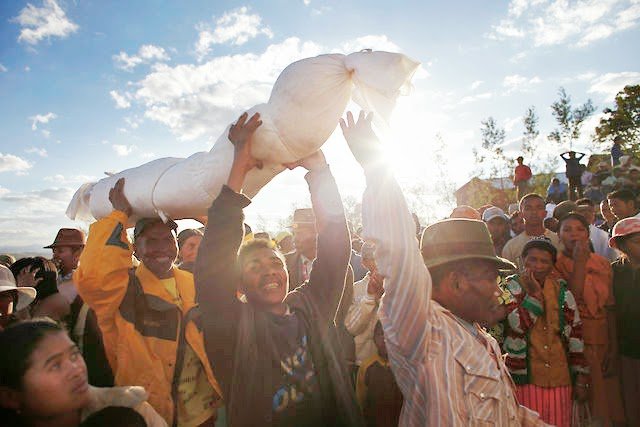
This funerary ritual takes place between June and September in a festive and joyful environment due to the excitement of seeing their deceased relatives again.
The tradition begins with the exhumation of the bodies of family members and friends to change their shabby clothing for new silk garments. Families live together with their deceased family members during this festival and hold a large banquet with traditional dishes such as vary be menaka, a dish of rice and boiled meat.
Afterwards, the living relatives dance with their deceased loved ones and once the festival is over, they return the remains to their graves.
Día de Muertos-Day of the Dead (Mexico)
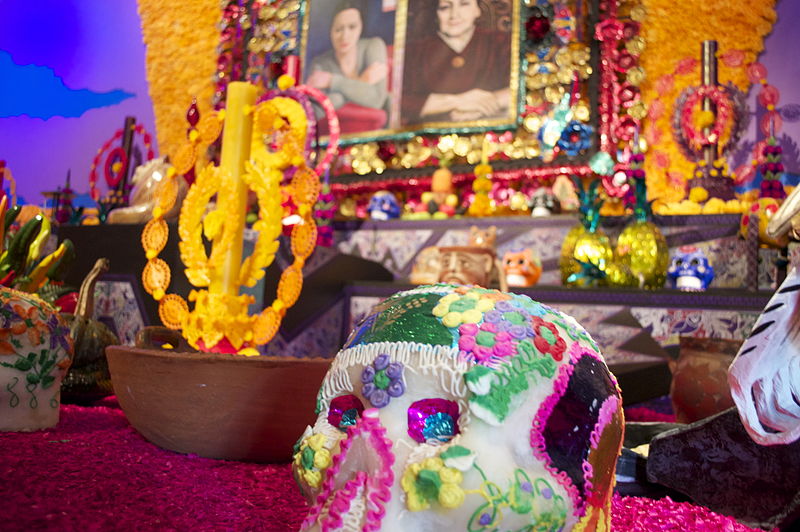
With this tradition, we should start with the idea that Mexican people “celebrate death” or in some way “laugh at it”. The tradition of the Day of the Dead arises from a blending of religious beliefs during the colonial era.
During these festivities, the temporary return of family members and friends is celebrated. The celebrations include decorating the graves of relatives and making altars with their pictures, accompanied by gifts. They prepare their deceased relatives’ favourite dishes and handmade objects such as paper silhouettes.
Family members scatter marigold petals, the traditional flower of this celebration. It is believed that this helps the spirits of the loved ones as a guide towards the world of the living so that they can visit their families. Traditionally, these petals are scattered from the tombstone of the deceased to the family’s home.
Sleenwache (Autriche)

Austria begins to prepare for this day from the beginning of October by decorating the streets with motifs of this festival.
On the night of Halloween, Austrians leave bread and water and leave a lamp switched on before going to bed so that they can receive their deceased loved ones during this night. But this festival also has religious connotations, from 30th October until 8th November they celebrate what is known as “All Souls’ Week” or Seleenwoche.
In Austria, the day of the dead is celebrated on 2nd November, when religious families go to mass and light candles in honour of their deceased loved ones.
As you can see, there are many varieties and differences between the celebrations and each one is of fundamental importance to the culture that embraces it. This is why you need to know your audience and the culture you are targeting when it comes to expanding and internationalising a business. For this reason, at BigTranslation, we bring you the opportunity to internationalise your business through professional native translators.
Did you know about any of these traditions, or do you know of any others? If you do, share it with us.

